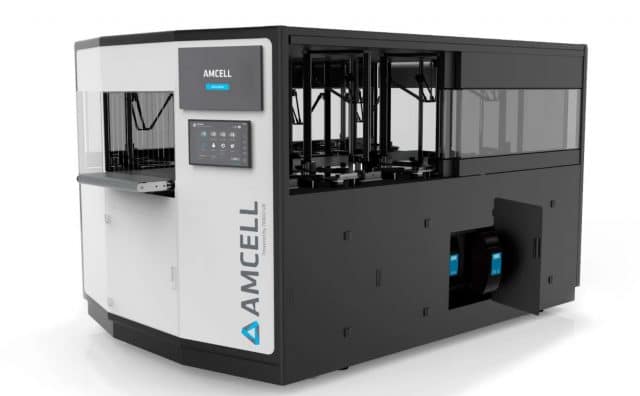Industrial-scale 3D manufacturing is here to stay and revolutionize for good the digital transformation of the manufacturing industry. As the industry advances, it is necessary to attend to the needs of the customers, such as the ability to print with more than one type of material, the storage, and the management of the pieces that are produced. Thus, during the meeting on additive manufacturing held on October 1 at the Triditive facilities in Asturias, the new Amcell 8300 and Amcell 1400 industrial 3D printers were presented.
The Amcell series can 3D print with both metals and polymers using an extrusion process. Triditive is the only Spanish company whose machines can use metal and polymer interchangeably, covering a large variety of materials, from titanium to PVC, with automatic calibration and being able to manufacture large parts – in the case of the Amcell 1400 – or mass-producing up to 80 tons of metal per year (or two tons of polymers), with fully automated parts collection and storage, in the case of the Amcell 8300.
Manufacturing on Demand
Mariel Díaz, CEO of Triditive, explained that this new series of machines allows the development of highly flexible technology, manufacturing complex parts, reducing time to market, and with a unique novelty: being able to print metallic and polymeric parts without having to choose between both materials, as usual. “Technology has to solve a problem, and to solve it we have to first know what the customer wants to solve,” she added. In addition, she explained that this technology “allows the development of digital warehouses and an automatic pricing engine to streamline procedures”, becoming more efficient, allowing to a faster part manufacturing -and being able to do so locally, thus also reducing manufacturing costs.
Díaz believes that this technology is key to help industries digitize and that is why Triditive seeks to develop the potential of additive manufacturing in the production line, in order to solve problems in a more practical way. Amcell printers are managed by the EVAM Software system, which not only allows updating workflows -controlling production and remote monitoring, but also creating “digital warehouses” with all the manufacturing patterns we need, and even calculating the prices of the parts produced through its quotation engine. Thus, parts can not only be produced on demand but also centralize and arrange all production orders.
* This article is reprinted from 3D Printing Media Network. If you are involved in infringement, please contact us to delete it.
Author: Andrea Gambini


Leave A Comment